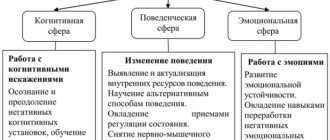Establishing connections and developing contacts between people characterizes emerging communications as a two-way activity. It is better to consider communication as interaction, taking into account what type of relationship prevails - cooperation or competition. But, in any case, it can be considered an important factor in social development. The process of emergence and regulation of relationships in a group or society depends on it.
Definition
Interaction in psychology is the process of direct or indirect influence of people on each other as a result of communication, which gives rise to their interconnection or isolation. This definition of the concept is the most common in modern psychology, but not the only one.
A revolution in the way we study the human psyche has allowed the science of relationships to reach a new level and distinguish between the concepts of soul and body as separate areas of study. The problem of their relationships has become particularly acute. The definition of interaction has changed depending on the influence of time and the interpretation of various schools of psychology.
- Rene Descartes, a French philosopher, described interaction as the complete dependence of a living body on the influence of external forces.
- The scientist and thinker from the Netherlands, Benedict Spinoza, defined the mental principle in man as the result of the interaction of the body and nature, which is also an influential factor in this interaction.
- According to the theory of Parson, an American sociologist, interaction between individuals underlies the construction of individual human activity. With this approach, the entire diversity of social activity is built from the psychology of the individual.
- Social psychologists, Americans Thibault and Kelly presented a theory of interaction in a dyad. This approach implies that interaction should be considered any interpersonal relationship that is characterized by a real exchange of behavioral reflexes within a specific situation. The interaction will continue as long as both participants receive mutual benefits from the interaction.
- Polish sociologist J. Szczepanski proposed a different model for defining interaction, according to which interaction is not characterized by individual acts, but is divided into successive stages.
- According to G. Mead's concept, interaction is the starting point of every social psychological research. In a situation of interaction, personality formation occurs. The individual recognizes himself as a person in joint activities with others.
- Domestic psychology also considers various schemes of interaction situations. According to Galina Andreeva, interaction is defined as a form of organization of specific human activity.
Types, types, styles
Interaction in psychology is the interactive action of individuals in a social environment, which is determined by many forms, types and styles. Social interaction is called interaction.
This concept refers to those actions of individuals that closely influence the actions and actions of others. Interactive interaction comes in various forms.
In modern psychology, the classification of P.A. is most often used to classify the types, types and styles of social cooperation. Sorokin, an American social psychologist of Russian origin.
He considered interaction as an exchange and classified it into the following types:
| Interaction type | Form | Areas of use |
| Imperative | Authoritarian. Establishes control over the partner's actions. Provides coercion to certain actions. Relationship: Superior-subordinate. | Regular military relations, work in extreme conditions. |
| Manipulative | Covert use of a partner in achieving individual goals. The desire to achieve control over the actions of another person. | Business, politics, advertising, propaganda. |
| Dialogical | Equal influence for the purpose of mutual knowledge and self-improvement. | Wide scope |
Russian psychologist S. Bratchenko added this classification with three more styles:
- Altruistic – actions for others to the detriment of oneself, development of a partner at one’s own expense. Such interaction implies that one of the participants ignores their problems.
- Comfortable - the individual fully joins the opinions of other participants, agreeing with all actions. In this situation, there are no opportunities for self-development.
- Indifferent – the position of a pragmatist, in which psychological problems of communication are ignored. There is no opportunity for partner development.
The following types of interaction are distinguished, depending on the way the contact of external properties is carried out:
- declarative (verbal);
- physical;
- sensorimotor (gesture).
The interaction of an internal property is mental.
All types have common properties - meaningful orientation towards another person and motivation.
A common division in psychology is into two main opposing types: cooperation and competition.
- Cooperation is mutual cooperation based on reaching a mutual agreement on the means to achieve a goal, which is not violated until the desired result is achieved.
- Competition is the interaction of personal or collective interests in conditions of confrontation between the parties.
Ways of human interaction with society
Psychologists describe 4 possible ways of interaction between an individual and a team:
- Initiative type of behavior. The acting person himself influences the environment. He is able to change the conditions of interaction in his team as he needs.
- Reactive type. A person is able to adapt to environmental conditions. But he himself does not influence her.
- Interpretive.
- The evaluator - the social environment influences him, he himself remains passive, only reflexively assesses what exactly is happening to him.
Naturally, those who choose an active position rather than a passive one are more successful in society.
Characteristics and principles
Awareness of the laws of relationships helps self-development and successful achievement of goals.
Any social action has the following basic characteristics:
- Always has an external reason or purpose.
- Expressed and accessible to observation from the outside.
- Tied to a specific situation.
- Expresses the immediate intentions of all participants.
Interaction in society, the success of a collective or individual enterprise - these topics are always relevant for sociologists. Many experts in the field of psychology and sociology are working on the principles of productive cooperation. Psychosocial theorist Milton Erickson insisted on the close interconnection of an individual's physiological, mental, and social actions.
Its basic principles are as follows:
- All people are unique and have the right to be themselves. To create an atmosphere of trust, it is necessary to accept a person with all his views and beliefs. The realization that everyone is individual in nature leads to awareness of their individuality and inner comfort.
- Everyone has their own internal resources to achieve a personal goal. Their implementation depends on the strength of desire. When starting cooperation with a person with similar goals, you do not need to initially judge his capabilities; the main thing is to find the right general strategy.
- Each choice of a person in a given situation is the only correct and necessary one under the influence of external circumstances. Therefore, you should not worry about past failures; it is better to concentrate on the current moment.
- Any negative action should be looked at from the perspective of the person who committed it. Behind all actions, even bad ones, there is an initial intention of positive action towards oneself or another person. This suggests that there are no completely negative people. There are those who try to achieve their positive intentions in a way that negatively affects others. If you look at the situation from his side, you may be able to direct your partner or competitor in the right direction.
- Nothing stays the same. New experiences, new technologies, new environments lead to constant changes. The system of values within a person also changes with age and under the influence of new knowledge. Changing goals and ways to achieve them is not a tragedy, but only a new step along the way.
Why do others influence us?
Every day we learn new information and exchange it with other people. All communication is based on mutually beneficial exchange of information. A person is afraid of being an outcast, therefore, even unconsciously, he strives to meet the requirements of his social group.
Traveling, meeting new people on a train or plane gives us new sensations, new communication experiences. A person can dramatically change their eating habits if they become friends with someone from another culture and spend a lot of time with them. And having made friends with a group of smokers, a person may start smoking, because it is psychologically uncomfortable to be a black sheep in a group. And there is a completely rational biological explanation for this - to build new contacts, we have mirror neurons in our brains, which help us imitate the actions of others, thereby understanding their “language,” and seeming like “one of our own” in the group.
Functions and role
Interaction in psychology is a multifunctional process that is determined by various criteria. Most often, the role of interaction is considered in the model: individual – activity – society.
The most important functions of interpersonal communication are:
- Pragmatic - manifests itself as the most important condition in uniting individuals to jointly perform common work.
- Formative – is implemented in the process of forming a person’s personality.
- function is carried out in the process of cognition and approval of personal attitudes during interaction with other people.
- Interpersonal – has different levels, from the sphere of friendship and love to business relationships.
- Intrapersonal - manifests itself in the individual’s communication with his inner self, in the construction of dialogues of internal and external speech.
Processes of social interaction
Communication is built on the basis of reflection. Understanding the thoughts and intentions of another is impossible without mirror neurons. It is impossible to prepare for a performance without being aware of how others will perceive you.
Interpersonal interaction is a process of mutual desire to cooperate. And if one party does not want to compromise in communication or has reprehensible thoughts towards the other party, then communication will not take place.
What processes of interpersonal interaction can be identified? If we go deeper into the study of communication, then all communication comes down to the simple transmission of symbols - words or signs. Each transaction involves an initiator of communication and a recipient. The initiator transmits signs - this is the first process. The second process is accepting this information.
However, in order to correctly decipher the meaning of the message, there should be no barriers in communication. In addition, both sides of communication must have common cultural “points of contact” and belong to a single social level. Because transactions between different cultural layers are very difficult.
Forms of manifestations and physiology
Every person is a social being, that is, aimed at some type of interaction. People have a strong need to belong, to form lasting relationships with other individuals. The need for positive interaction is determined by a number of socio-biological aspects and contributes to human fitness and survival.
Interaction is a process that manifests itself in a wide variety of areas of human communication:
- In the economic sphere, each person acts as an employee, owner or manager.
- Political - generates cooperation or confrontation between individuals, as representatives of various movements, political parties.
- Professional – creates interaction between representatives of various professions.
- Demographic - includes communication between different age, racial, and gender groups.
- Family – interaction within a circle of family ties.
- Religious – interaction or conflicts based on religious beliefs and beliefs.
- On the basis of the territorial-settlement sphere, interaction between newcomers and permanent residents occurs.
Social interaction manifests itself as the connection of an individual with another individual, and the connection of each with the common world.
There are various forms of interaction.
According to P. Sorokin’s structure, they are distinguished as follows:
- By duration: long-term and short-term.
- By the number of participants: single, between two parties and multilateral.
- Organized and spontaneous.
- Conscious and unconscious.
- Intellectual, emotional and strong-willed.
- Actual and possible.
In each sphere, all basic types and types of interaction are possible. The formation of the human personality is manifested in the harmonious relationship between the mental and physiological capabilities of the body.
The realization of an individual in society is possible with a sufficient level of psychological energy, which determines his performance. At the same time, flexibility and mental stability allows you to adequately assess the environment and find ways to mutually beneficial cooperation.
Physiological basis of social interaction
In the 90s of the 20th century, a group of neurobiologists under the auspices of the Italian Giacomo Rizzolatti discovered a group of mirror neurons in monkeys. A group of special nerve cells are activated in the brain when the monkey sees someone else picking up food, such as a nut.
As it turned out later, humans also have them, and they react not only to body movements in space, but also to emotions. Interpersonal interaction is largely the work of these neurons. This is the biological basis of our social nature; justification for the empathy inherent in us from the very beginning.
Thanks to these neurons, a person learns to speak and act through imitation. And also learns to perceive emotions and build long-term interpersonal interactions; You need to somehow explain the behavior of another to yourself, especially if this person is of a different culture. It turns out that in order to build a relationship with another, we need to see ourselves in the other and let him know that we understand him.
Psychological theories and schools
Various psychological schools present their theories of relationship development.
The main ones accepted in common practice are:
| Theory | Founders | Basic principles |
| Theory of action | M. Weber, P. Sorokin, T. Parsons. | Social action is defined by the structure: Actor - object of directed action - norms of interaction - goals - situation. The scheme is suitable only for experimental analysis. |
| Social sharing | J. Homans | Social interaction is formulated as a system of exchanges based on balancing spending and rewards. 4 principles of relationships are formulated. |
| Social connection | Ya. Shchepansky | The main one is the concept of social connection, which is represented through a phased implementation:
|
| Psychoanalytic | Z. Freud, K. Horney, G. Sullivan | The theory proves that the interaction of the parties is based on impressions received in childhood. Relationships in the family are subconscious prototypes of relationships with the outside world in adulthood. Accordingly, three relationship strategies are defined:
|
| Transactional Analysis | E. Bern | Transaction is the interaction of the subject’s current states. There are three states: parent-adult-child. Depending on the states of an individual subject, relationships are established. The “parent” in a relationship requires compliance with norms, laws, and established rules. The “adult” strives to realistically assess the situation and find a solution to the issue. “Child” - emotional experiences are in the foreground. |
The following theories are also widespread:
- symbolic interactionism (J. Mead, G. Bloomer);
- theory of motivation (A. Maslow);
- theory of impression management (E. Goffman);
- interaction registration scheme (R. Bales).
What does social psychology study?
Problems of interpersonal social interaction are assessed by specialists in the context of the following issues:
- Studying the cognitive (cognitive) processes of each participant in the interaction.
- Study of the constituent characteristics of the environment: spatial, social, physical characteristics. And the aspect of a social group is also taken into account - a student environment, a city council meeting or other association of individuals.
- The study of both the system of an individual and the influence of the environment on it.
Many scientists participated in the development of this social science - L.V. Smolina, Yasvina, Panova, etc.
Diagnostics
Interaction in psychology is a broad area of research in the field of interpersonal relationships in various spheres of human activity. With the help of test diagnostics, psychologists help determine the personal characteristics of an individual, his greatest strengths and formulate ways to achieve goals.
Research in the field of interpersonal relationships and communications allows us to optimally build profitable interaction in any field of activity.
- The Timothy Leary Questionnaire is a diagnostic of interpersonal relationships that allows you to determine a person’s self-image and to evaluate him from others. The test consists of 128 judgments. Of these, in the first circle you need to select those that correspond to a person’s idea of himself, in the second – to his ideas about the ideal image. The result is provided in graphical form.
- The Thomas -Kilman Test of Behavior in Conflict Situations is designed to measure an individual’s interaction style and also identify predispositions to create or resolve conflicts. The test contains 30 pairs of situations from which you need to choose the one that is most typical for the individual.
- Victor Boyko's tests determine the presence and degree of negative communicative attitudes that are formed as a result of negative experiences of interactions or pronounced negative emotionality. The test's 25 questions require sincere "yes" or "no" answers.
- R. Girshfield's test diagnoses dependence in interpersonal interaction in various spheres: partnership, love, family. The test consists of 48 questions, to which 4 possible answers are given.
- The Berry and Janae Weinhold scale was developed to assess interdependence in relationships. The test consists of 20 questions.
- T. Bant's manipulative attitude scale allows us to identify the attitude towards an interaction partner as a means of achieving personal goals, without taking into account his will and desires. The test consists of 20 questions about judgments about people around you.
These and other tests are used by practicing psychologists. Many are provided on websites; you can go through them individually for free. In this case, a simplified interpretation of the result is provided. If you take a serious approach to the situation, it is worth getting advice and more detailed explanations from practicing specialists.
You can undergo psychological diagnostics at psychological assistance centers. Services are provided both upon individual request and for collective research within the company. Prices for services vary, depending on requests. The approximate minimum cost of consultation is in the range of 1200-1500 rubles.
Management methods
Interaction management is possible with the help of various trainings and psychological exercises. Their goal is to remove internal barriers and develop communication skills.
Many teams of trainers are working on creating special exercises. Exercises teach you how to manage the flow of a conversation and how to introduce yourself. Below are some examples of exercises that are used in interaction management training.
Exercises from the training:
"Tell about…"
This exercise is used for deeper personal disclosure and for getting to know each other.
Conducted in a group. Each of the training participants chooses any personal item and characterizes himself on behalf of this item. Other objects may ask him questions about its owner.
"In other words"
During this lesson, speech flexibility is trained, the ability to convey the same thought in your own words.
All participants in the game are divided into teams of 4 people. The goal of the game: to convey a simple phrase given by the presenter in a chain, without changing its meaning, but without using a single word in its exact form. Ultimately, 4 new phrases should be formed, exact in meaning, but from different words. The team that completes this task faster wins.
Exercises from Klaus Vopel:
"Who reminds whom"
It often happens that it is difficult for a new group to communicate with someone due to the fact that the person, in some way, resembles an already familiar person from a close circle. Subconsciously, the attitude towards him develops according to the evoked association. The exercise is carried out at the beginning of acquaintance with a member of the group.
Each participant is given 3 minutes to identify a person similar to someone significant to him. This person needs to be given a card on which to indicate who he resembles and the main features of a significant person. During the discussion, a closer acquaintance occurs, coincidences and discrepancies between the real and the represented are revealed.
"Self-disclosure"
Interaction in a group also depends on how individual members are able to reveal themselves in the group. During the training, everyone independently assesses their ability to open up. The results obtained are discussed and compared with the opinions of other group members about this individual.
In psychology and sociology, the science of interaction plays a large role. Effective communication is the basis of various areas of human life, from personal relationships to interactions for career growth.










